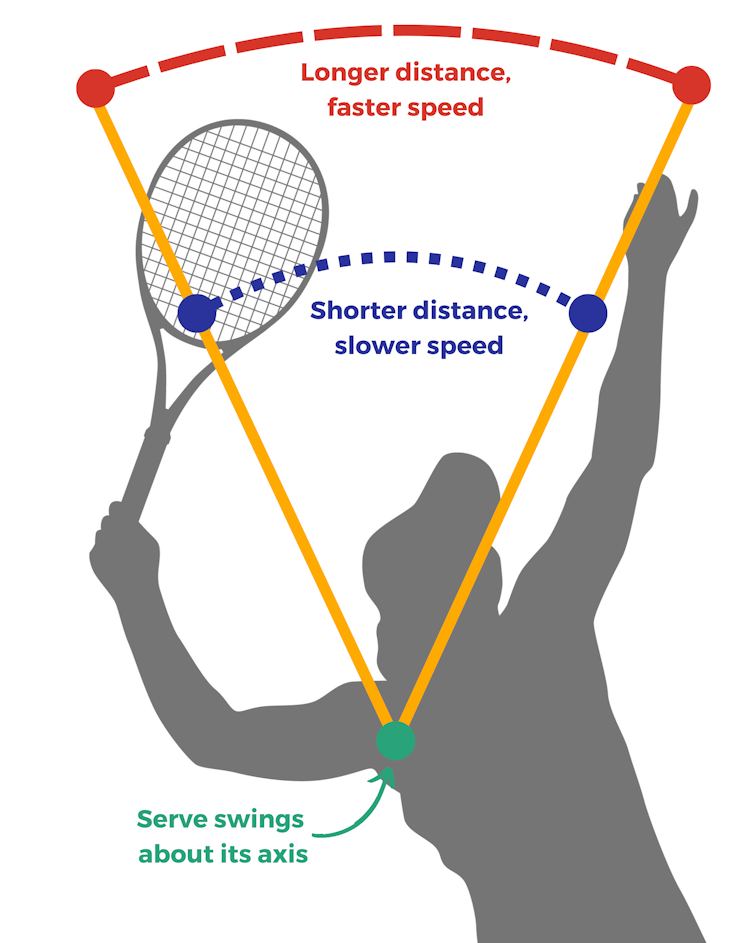We’re nearing the halfway point of this year’s Australian Open and players like the United States’ Reilly Opelka (ranked 170th in the world ) and France’s Giovanni Mpetshi Perricard (ranked 30th) captured plenty of attention despite early-round exits.
These two players caught the eye of the tennis world for not only their towering height (standing 2.11 metres and 2m respectively) but their thunderous serves.
Players of this height don’t just stand out in the players’ lounge – they enjoy a significant advantage on court.
But why exactly does being tall help create those blistering serves? The answer lies in some fascinating physics and biomechanics.
The numbers don’t lie
The connection between height and serving power isn’t just something we imagine – analyses of Grand Slam tennis players show our eyes aren’t deceiving us.
The fastest server of all time might be considered relatively short – Australia’s Sam Groth stands “only” 1.93m – but served an ace at a blazing 263.4 kilometres per hour during an ATP Challenger event in Busan in 2012.
The rest of the top five fastest servers in men’s tennis history, and eight of the top ten, all stood at more than 2m tall.
In women’s tennis, the findings also hold true, with Spain’s Georgina Garcia Perez (1.88m) holding the record at 220km/h. And four of the top five fastest were at least 1.82cm – Sabine Lisicki (Germany) is the shortest at a still above average height of 1.78cm.
The physics behind the power
So what makes height such an advantage for serving?
Among many factors, three are critical.
First, taller players generally have longer arms, which act like speed amplifiers.
In physics terms, the speed of your hand (and therefore the racquet) is approximately equal to the length of your arm multiplied by how fast you rotate it, as shown in the figure below. Longer arms equal faster racquet speeds.















